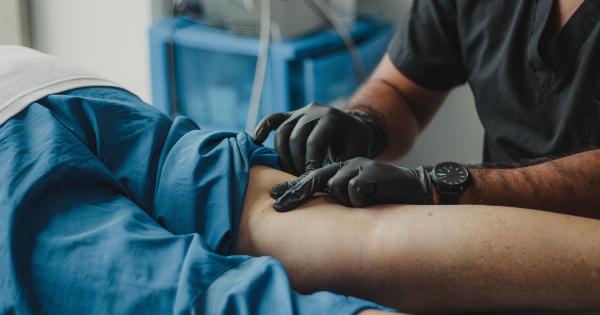Knee replacement is a surgical procedure that involves replacing a damaged or worn-out knee joint with an artificial joint, known as a prosthesis.
Knee replacement surgery is usually done to relieve the pain and disability arising from severe arthritis or injury of the knee joint. Over the years, advances in technology and techniques have led to safer and more effective knee replacement procedures. Here are some of the newer techniques in knee replacement.
Robotic-Arm Assisted Knee Replacement
Robotic-arm assisted knee replacement is a type of knee replacement surgery that involves the use of a robotic arm to help the surgeon to perform the procedure with more precision.
The robotic arm is controlled by the surgeon, who uses it to make precise cuts and placements of the knee implant. This technique allows for a more precise fit of the components and leads to better outcomes for the patient.
Studies have shown that robotic-assisted knee replacement is associated with shorter hospital stays, fewer complications, and improved patient satisfaction.
Minimally Invasive Knee Replacement
Minimally invasive knee replacement is a technique that involves making smaller incisions and uses smaller instruments to perform the procedure.
This technique is less invasive than traditional knee replacement surgery, which requires larger incisions and more extensive soft tissue dissection. Minimally invasive knee replacement surgery results in less pain, less blood loss, and a faster recovery time.
Patients who undergo this type of surgery can return to their normal activities sooner than patients who undergo traditional knee replacement surgery.
Patient-Specific Instrumentation
Patient-specific instrumentation (PSI) is a technique that involves using advanced imaging techniques to create a 3D model of the patient’s knee joint.
The 3D model is then used to create custom instruments that are tailored to the unique anatomy of the patient’s knee. These custom instruments allow for more precise and accurate placement of the knee implant, resulting in a better-functioning knee replacement.
Studies have shown that patients who undergo PSI knee replacement surgery have better outcomes and a faster recovery time than patients who undergo traditional knee replacement surgery.
Customized Knee Implants
Customized knee implants are made to fit the unique anatomy of a patient’s knee joint. These implants are designed using advanced imaging techniques and 3D printing technology.
Customized knee implants offer a better fit and more natural feeling knee replacement. They are also associated with a faster and less painful recovery time and a lower risk of implant failure.
Studies have shown that patients who undergo customized knee replacement surgery have better outcomes and a higher satisfaction rate than those who undergo traditional knee replacement surgery.
Ceramic Knee Implants
Ceramic knee implants are a newer type of knee implant that has been shown to have several advantages over traditional metal implants. Ceramic implants are more durable, reduce wear and tear on surrounding tissues, and resist corrosion.
They are also hypoallergenic, which means they are less likely to cause allergic reactions in patients. Studies have shown that patients who undergo knee replacement surgery with ceramic implants experience less pain and a faster recovery time than those who undergo surgery with metal implants.
Navigated Knee Replacement
Navigated knee replacement is a type of knee replacement surgery that involves the use of computer-assisted navigation to help the surgeon to perform the procedure.
The navigation system provides real-time information about the position, alignment, and angle of the knee implant during surgery, allowing the surgeon to make precise adjustments as needed. This technique is associated with fewer complications, better implant alignment, and a lower risk of implant failure.
Studies have shown that patients who undergo navigated knee replacement surgery have better outcomes and a higher satisfaction rate than those who undergo traditional knee replacement surgery.
One-Stage Bilateral Knee Replacement
One-stage bilateral knee replacement is a type of knee replacement surgery that involves replacing both knees at the same time, in a single surgery.
This technique is suitable for patients who need knee replacement surgery in both knees and are medically fit for the procedure. Benefits of one-stage bilateral knee replacement surgery include reduced hospital stay, faster recovery time, and cost savings.
Studies have shown that patients who undergo one-stage bilateral knee replacement surgery have better outcomes and a higher satisfaction rate than those who undergo separate surgeries for each knee.
Outpatient Knee Replacement
Outpatient knee replacement is a newer type of knee replacement surgery that allows patients to return home on the same day of the surgery. This technique is suitable for patients who are medically fit and have a strong support system at home.
Outpatient knee replacement surgery is associated with less pain, fewer complications, and a faster recovery time than traditional inpatient knee replacement surgery. Studies have shown that patients who undergo outpatient knee replacement surgery have better outcomes and a higher satisfaction rate than those who undergo inpatient knee replacement surgery.
Conclusion
Knee replacement surgery is an effective treatment option for severe arthritis or injury of the knee joint. Advances in technology and techniques have led to safer and more effective knee replacement procedures.
Newer techniques in knee replacement, such as robotic-arm assisted knee replacement, patient-specific instrumentation, customized knee implants, ceramic knee implants, navigated knee replacement, one-stage bilateral knee replacement, and outpatient knee replacement, offer patients a variety of options to achieve a better functioning knee replacement with less pain and a faster recovery time.




























